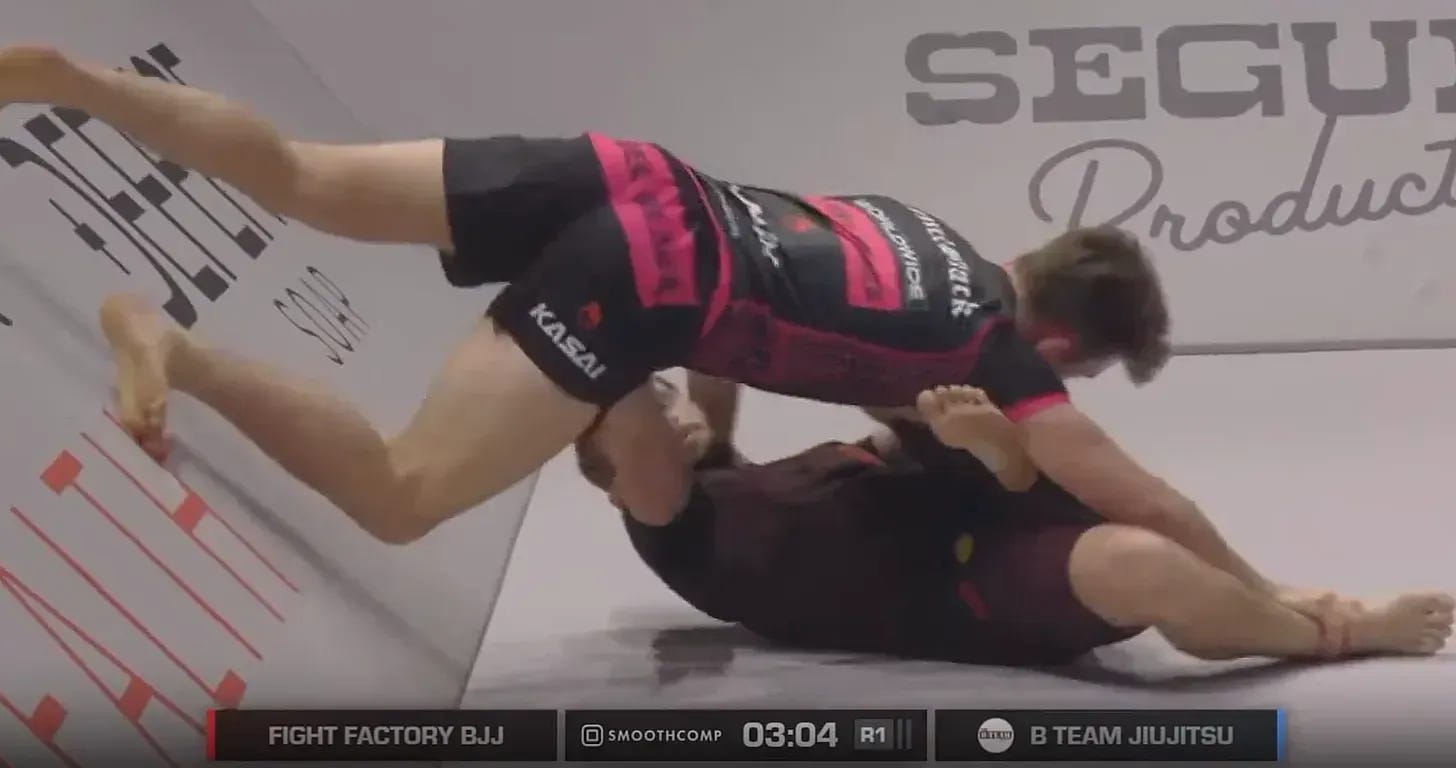Craig Jones Invitational and how walls make for more entertaining jiu-jitsu
A quick look at how the use of walls in the CJI and Karate Combat are providing the best stage for grappling.
For years, Brazilian jiu-jitsu athletes would operate near the boundary line on the mat in competition matches.
This is to run out of bounds before conceding a takedown and/or points so that the referee will reset the action in a neutral position as long as no position has been stabilized.
Karate Combat and the recent Craig Jones Invitational (CJI) this past weekend have now provided a solution for this gamesmanship — hosting matches in an arena with walls.
Andrew and Will Tackett, as well as 80+kg CJI $1 million winner Nicky Rod and the rest of the B Team notably installed walls in their gyms in preparation for the tournament.
How do walls change the playing field? For starters, athletes can use the wall to pin an opponent similar to an MMA cage.
However, there is one key difference and that’s when it comes to wall walking. Wall walking is a powerful tactic used for standing up against the cage and we see it used regularly in the UFC whenever someone is taken down.
Here’s an example of Conor McGregor wall walking in his rematch with Dustin Poirier:
Former UFC middleweight champion Luke Rockhold competed in the CJI and attempted to wall walk in his match against D1 wrestler Pat Downey.
The problem, though, is that the CJI wall is only on a 45 degree angle making wall walking next to impossible.
This meant Rockhold ended up pinning himself instead, and allowed Downey to continue forcing him to carry his weight.
Not only is the wall used to stop athletes running out of bounds — it can also be a fantastic tool for offense.
For example, Andrew Tackett creatively passed to north south against Nicky Ryan, climbing up the wall for added pinning pressure.
Ryan would’ve been in more trouble if not for his right knee sneaking in and then left arm framing as Tackett first started moving to north south.
In another instance, Nicky Rod picks up a single leg on Max Gimenis and uses it to transition to a body lock before running him to the wall which aids him in the takedown.
The commentators notably pointed out how in any other competition, this exchange would’ve ended up out of bounds with a reset.
The wall can also do more than just aid an athlete in finishing takedowns — earlier this year, CJI founder and BJJ wizard Craig Jones competed at Karate Combat’s Pit Submission Series 2 against UFC welterweight Phil Rowe.
Further highlighting its creative uses, Jones leveraged the wall in that event to fire a flying triangle on Rowe.
Jones created one of the best grappling events ever with the CJI this past weekend.
It was free on YouTube. It had a number of big names competing from the aforementioned Rockhold and Nicky Rod to the 2022 77kg champion Kade Ruotolo, the absolute bronze medalist Tye Ruotolo, ADCC/IBJJF gold medalist Ffion Davies and UFC strawweight star Mackenzie Dern.
It went head to head with ADCC on the same weekend, even going as far as renting out an arena 10 minutes down the road and arguably came out on top.
There were a number of factors, but the walls played a big role as it simply made for more entertaining matches.
I was skeptical before the event but now, I’m a firm believer that a pit with walls is unironically the best stage for grappling.




